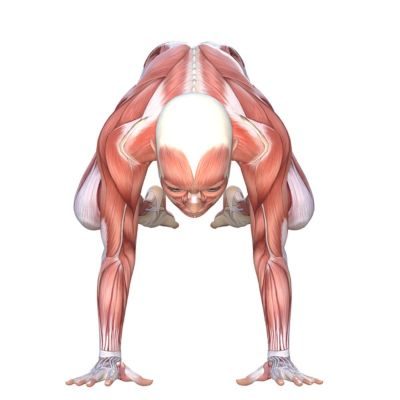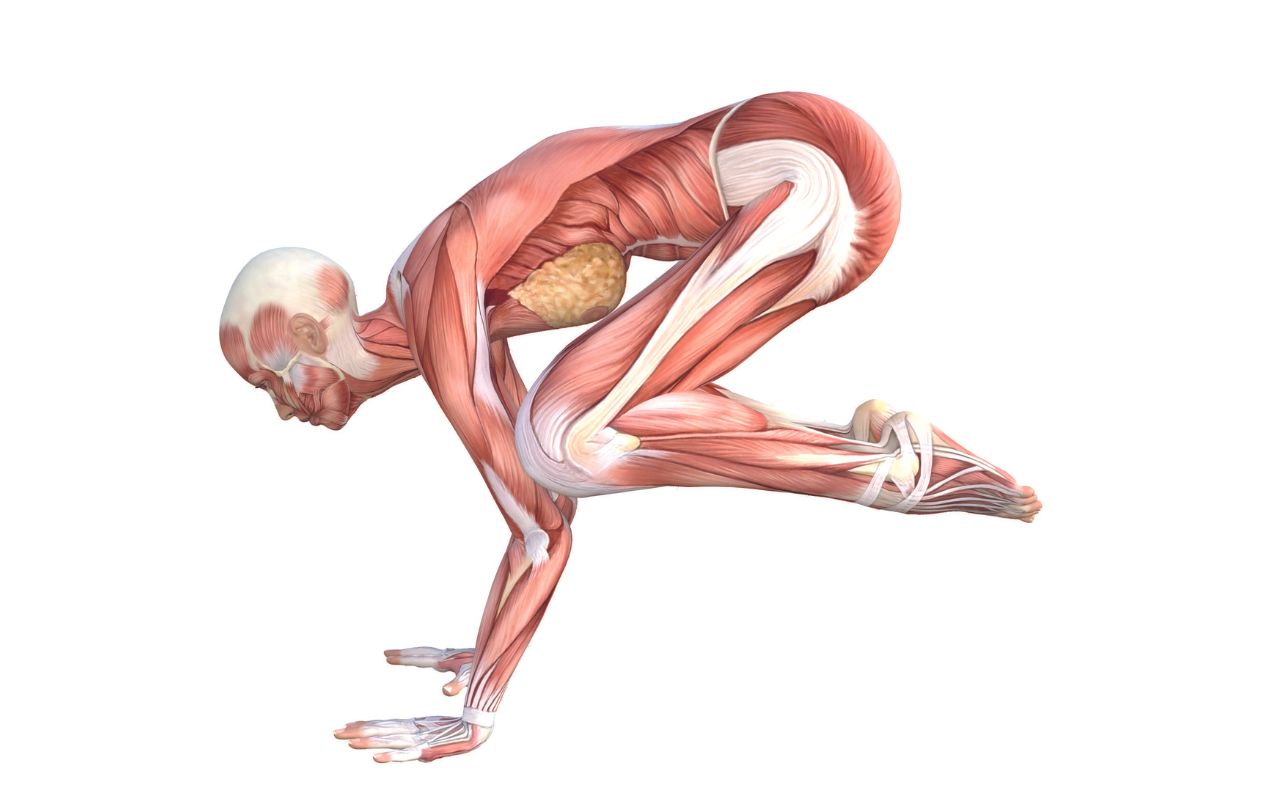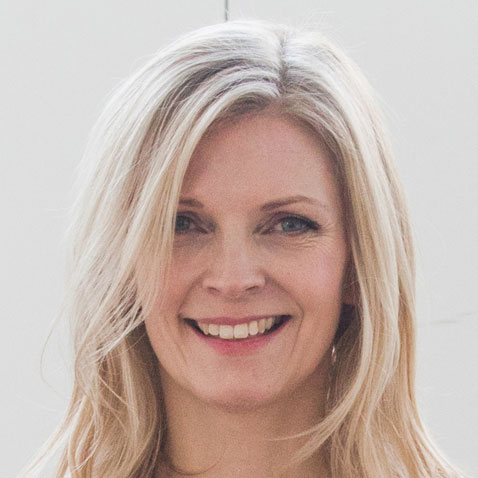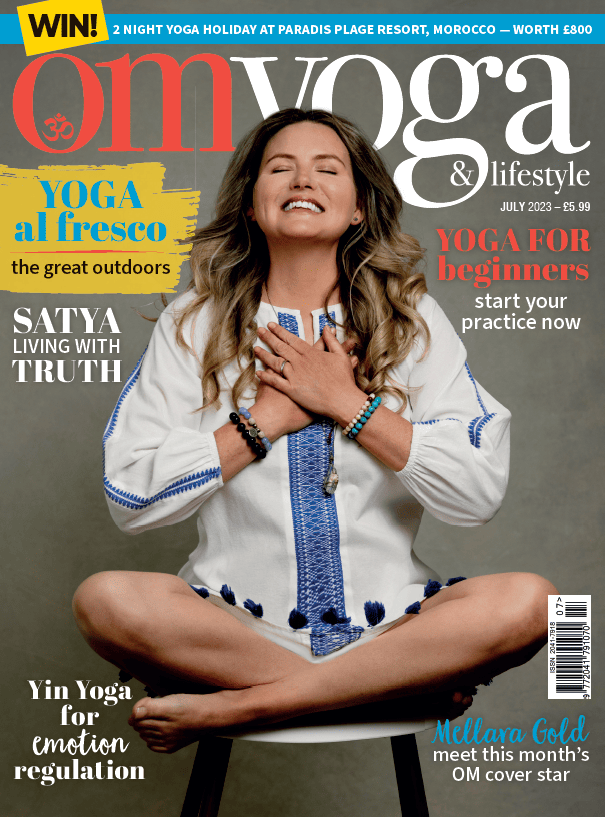
A 360º overview of...
Crow Pose (Kakasana)
With Dr Kiki Morriss
Crow Pose is an advance arm balance that requires strength, balance and alignment. At first it is a challenging pose, but learning it is like riding a bicycle. Once you know how to do it you will never forget! So keep practicing and persevering, and as you balance in the pose imagine a crow perching in a tree.
Moving into the pose
- From a squatting position, place your hands shoulder-width apart in front of your feet.
- Bend your knees and elbows to the sides.
- Come onto the balls of your feet.
- Firmly press your knees on your upper arms.
- Tilt your torso forwards so your elbows align over your wrists.
- Gradually lift your feet and bring your big toes to touch in the balance.
Focus your gaze
- Your focal point (drishti) is at a fixed point on the ground in front of you. Do not look directly down on the ground and keep your head lifted.
Hips & legs
- Use your psoas, adductors longus and brevis and gluteus minimus to flex your hips.
- Use your adductor muscles to squeeze your thighs towards your outer arms.
- Engage your hamstrings to bend your knees and to draw up your lower legs.
Arms & Shoulders
- Engage your deltoid muscles to lift your body.
- Adbuct your scapulae and press your hands down by engaging your serratus anterior and pectoralis major.
Feet
- Bring your feet together, so your big toes are touching.
- Keep your feet lifted.
Hands
- Place your hands shoulder-width apart and spread your fingers wide apart.
- Use your pronator teres and quadratus and your wrist flexors to press your hands firmly onto the ground.
- Spread your weight evenly across your hands.
Benefits
- Strengthens your back, chest, hips, back of thighs and core.
- Stretches your buttocks and front of thighs.
- Improves balance.
- Focuses your mind.
- Inspires strength, stamina and confidence.
Variations & Modifications
- Practice the pose slowly and patiently. Try lifting one foot up at a time as you feel your way into the pose. Work towards lifting both feet together.
- A fear of falling is often an issue when practicing Crow Pose. If this is the case, place a cushion or folded blanket in front of you, so you have a soft landing if you do fall.
- Try reclining Crow Pose where you experience the shape of the pose whilst lying on your back.
- In Crow Pose your arms are bent and your knees are resting on your upper arms. For a similar position try Crane Pose (Bakasana) where your arms are straight and your knees are tucked closer to your underarms.
- In Crow Pose your arms are bent and your knees are resting on your upper arms. For a similar position try Crane Pose (Bakasana) where your arms are straight and your knees are tucked closer to your underarms.
- From Crow Pose try moving into a Tripod Headstand by lowering the crown of your head onto the floor and then lifting your legs. To raise your head back into Crow Pose, lift your shoulders strongly and draw your trapezius muscles and shoulder blades down. At the same time stretch your upper arms up.

Contraindications
- Avoid Crow pose if you have a wrist injury or issue.
- Avoid the pose if you suffer from dizziness or balance issues.
- Practice with caution if you have a back or hip injury.







